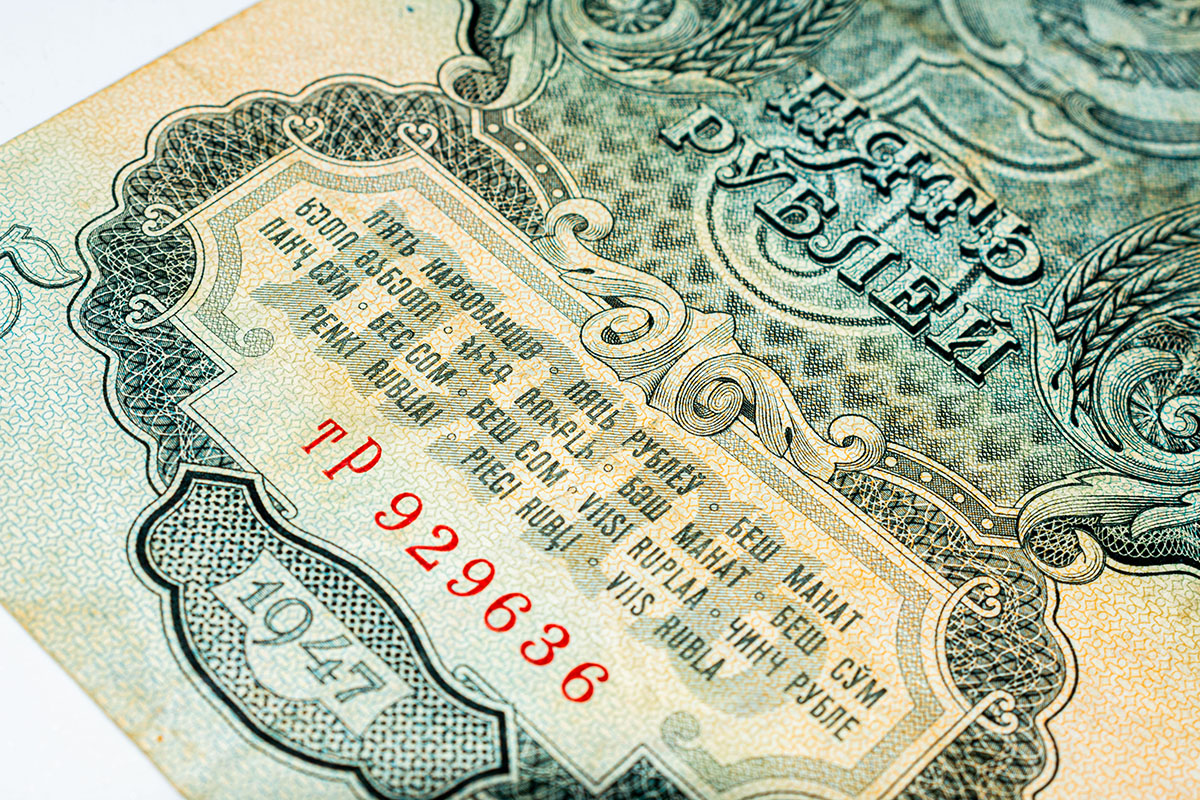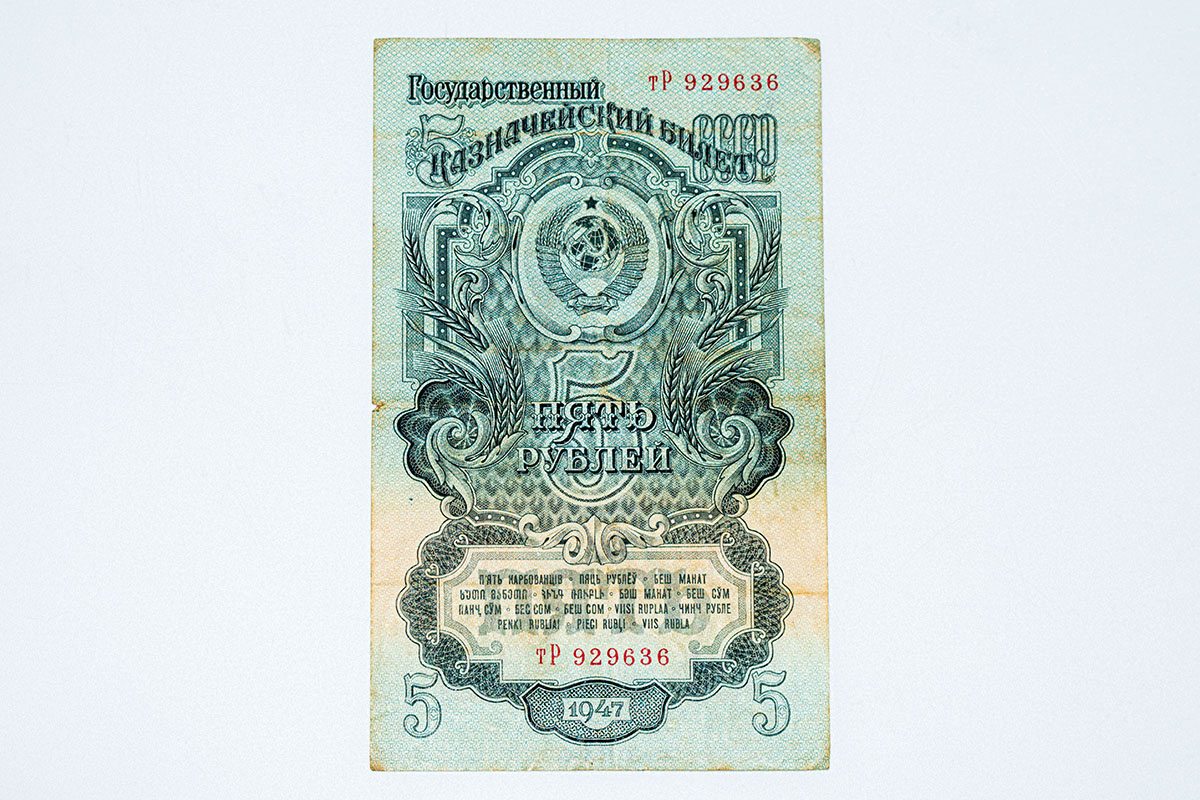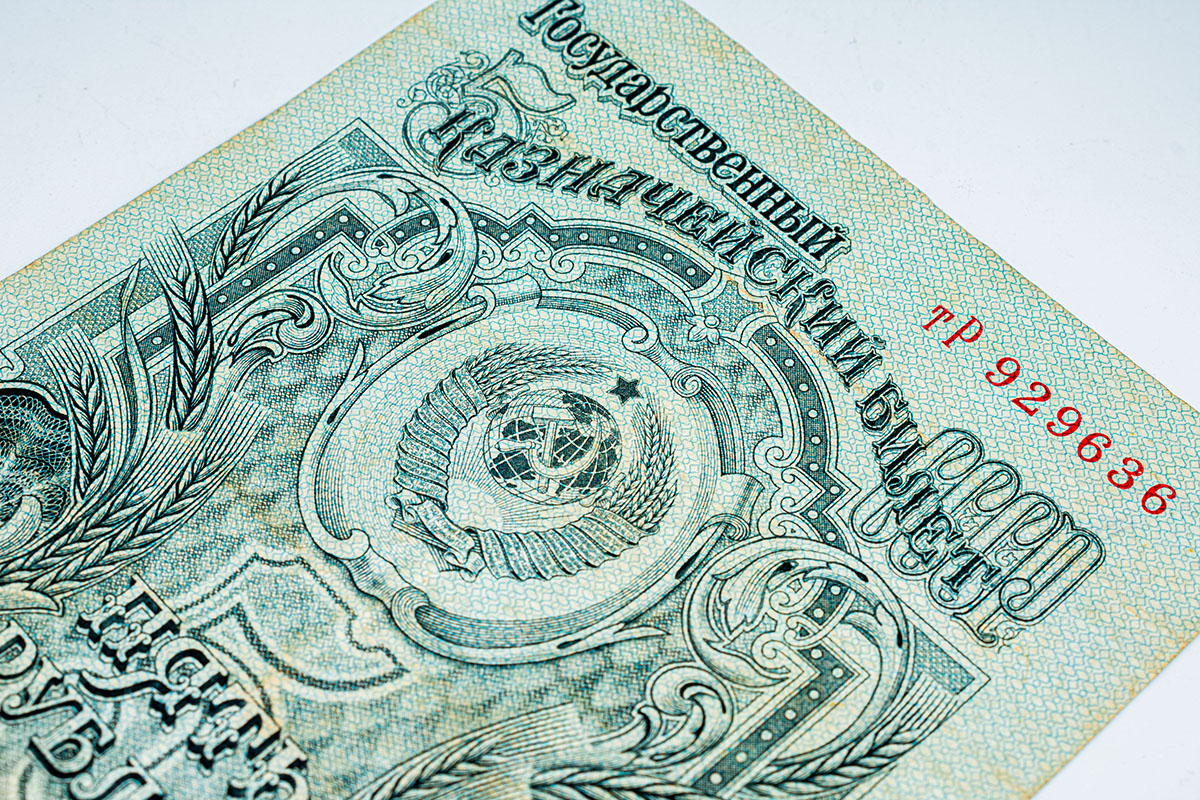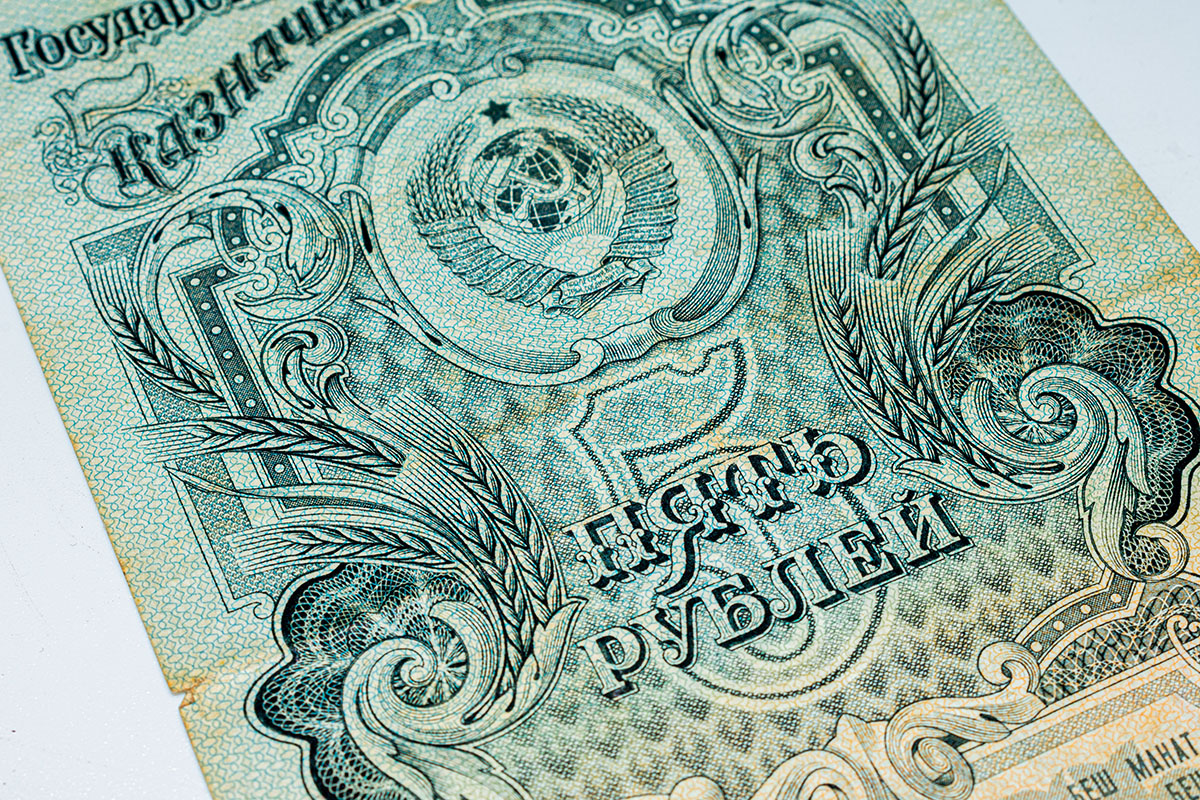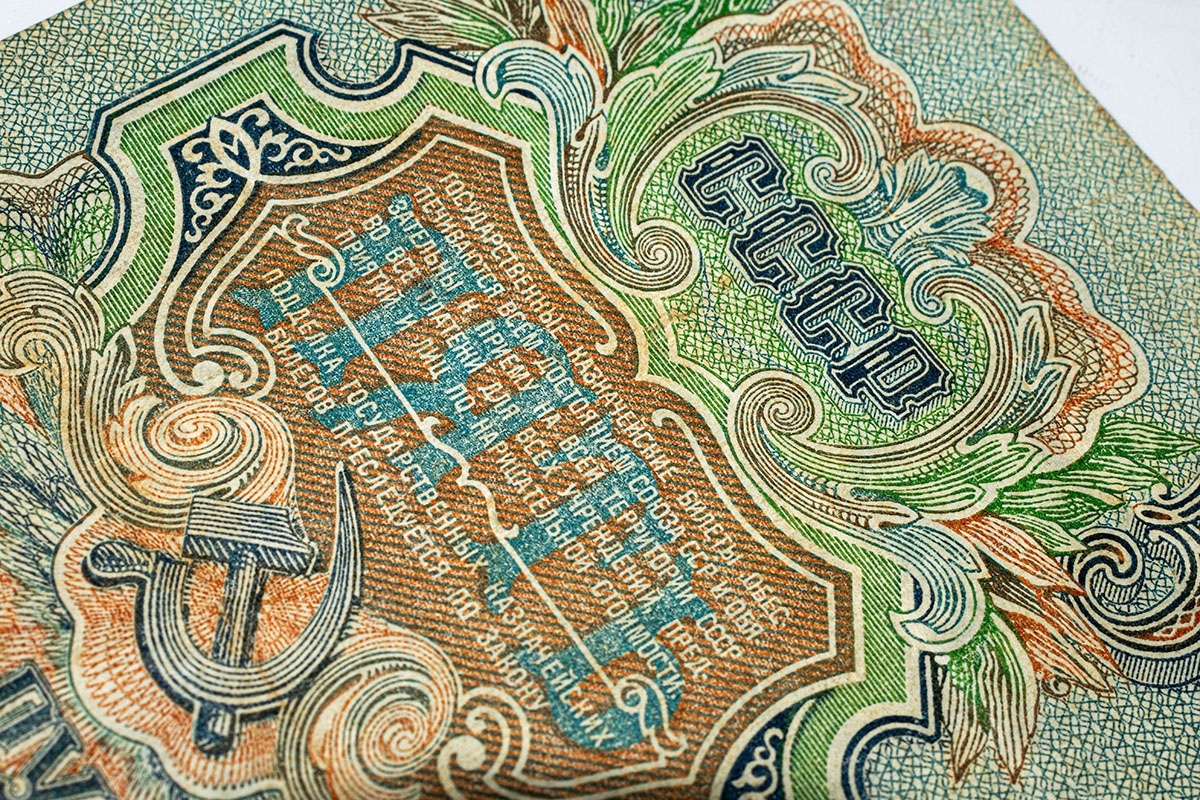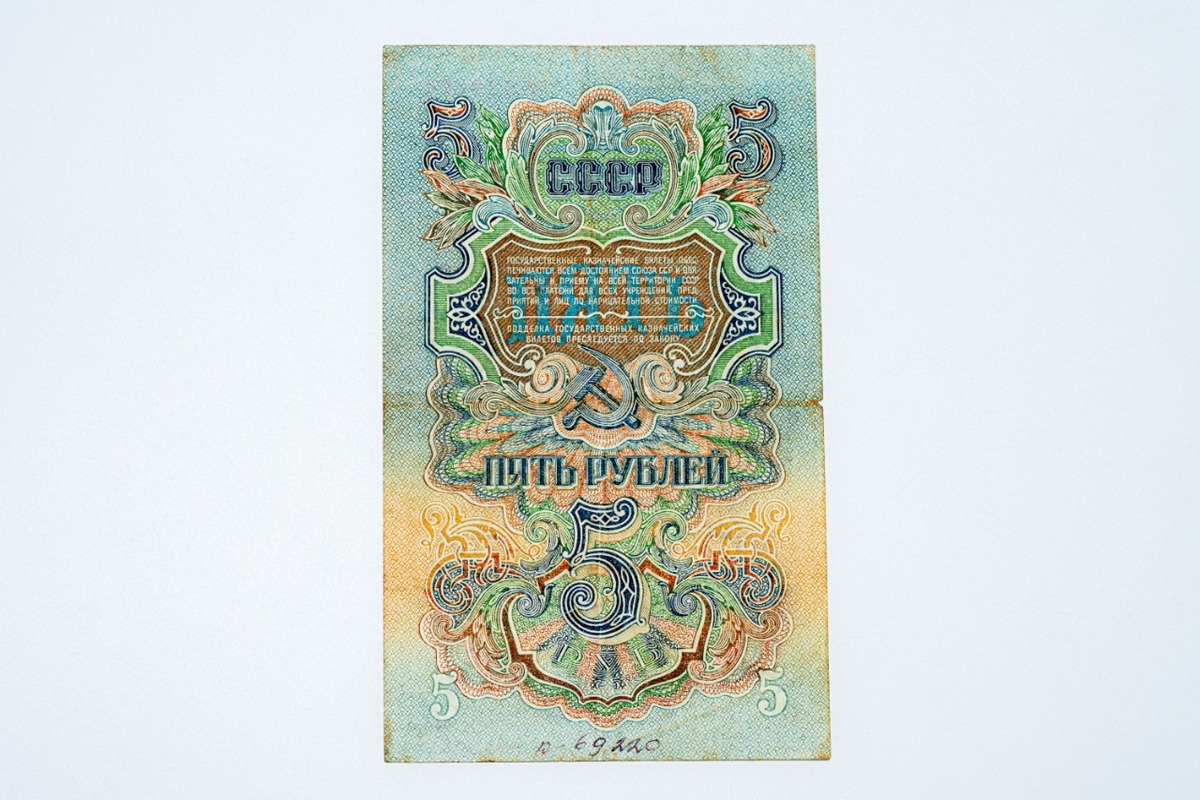In 1947, the Soviet Union carried out a monetary reform aimed at eliminating the consequences of the German-Soviet War in the monetary sphere, strengthening the financial system, and preparing for the abolition of the rationing system for goods.
The terms of the reform were outlined in Resolution No. 4004 of the Council of Ministers of the USSR and the Central Committee of the All-Union Communist Party (Bolsheviks) dated December 14, 1947, titled “On the Monetary Reform and the Abolition of Ration Cards for Food and Industrial Goods.” The reform introduced a redenomination of cash at a rate of 10:1.
As part of the reform, new banknotes were issued in seven denominations, divided into treasury and bank notes. Treasury notes included denominations of 1, 3, and 5 rubles, while bank notes were issued in denominations of 10, 25, 50, and 100 rubles. The designs were created by Ivan Dubasov, Chief Artist of Goznak, the State Printing Office of the USSR.
All paper money was subject to exchange at the rate of one new ruble for ten old rubles. Coins with denominations from one to twenty kopecks retained their face value and were not subject to exchange. The main phase of the reform took place from December 16 to 22, 1947, while in remote regions of the USSR the exchange period was extended until December 29. The reform had a confiscatory nature, as wages, scholarships, and pensions were not recalculated. Due to the extremely short exchange period, the reform caused widespread panic, speculation, and long queues. A significant portion of earlier-issue banknotes remained unexchanged — almost 30 billion old rubles stayed in the hands of the population. At the same time, the state withdrew substantial funds from the public through the forced distribution of state loans.
As a result of the reform, surplus money was removed from circulation, ration cards for food and industrial goods were abolished, and the free sale of goods at state retail prices was introduced. The 1947 banknotes remained in circulation until the 1961 monetary reform.
The 5-ruble State Treasury Note of the USSR, issued in 1947, is rectangular in shape, vertically oriented, and printed on watermarked paper. The color scheme is predominantly blue and orange, with the addition of black, blue, light green, and brown-gray tones. The obverse features a decorative rosette with the 1946 version of the State Emblem of the USSR in the center. Above it is an inscription in Russian: “Государственный казначейский билет СССР” (State Treasury Note of the USSR). The denomination is indicated numerically and in words in Russian, Ukrainian, Belarusian, Azerbaijani, Georgian, Armenian, Turkmen, Uzbek, Tajik, Kazakh, Kyrgyz, Karelian, Moldovan, Lithuanian, Latvian, and Estonian. A six-digit serial number with a two-letter prefix (e.g., тР 929636) and the issue year, 1947, are printed at the top and bottom.
The reverse also features a decorative rosette, with a hammer and sickle emblem in the center and two inscriptions in Russian: “Государственные казначейские билеты обеспечиваются всем достоянием Союза ССР и обязательны к приёму на всей территории СССР во все платежи для всех учреждений, предприятий и лиц по нарицательной стоимости” (State Treasury Notes are backed by all assets of the USSR and must be accepted throughout the USSR in all payments by institutions, enterprises, and individuals at face value) and “Подделка государственных казначейских билетов преследуется по закону” (Counterfeiting of State Treasury Notes is punishable by law). At the top is the abbreviation “СССР” (USSR), and the denomination is again shown in numerals and words in Russian in the corners and center.
